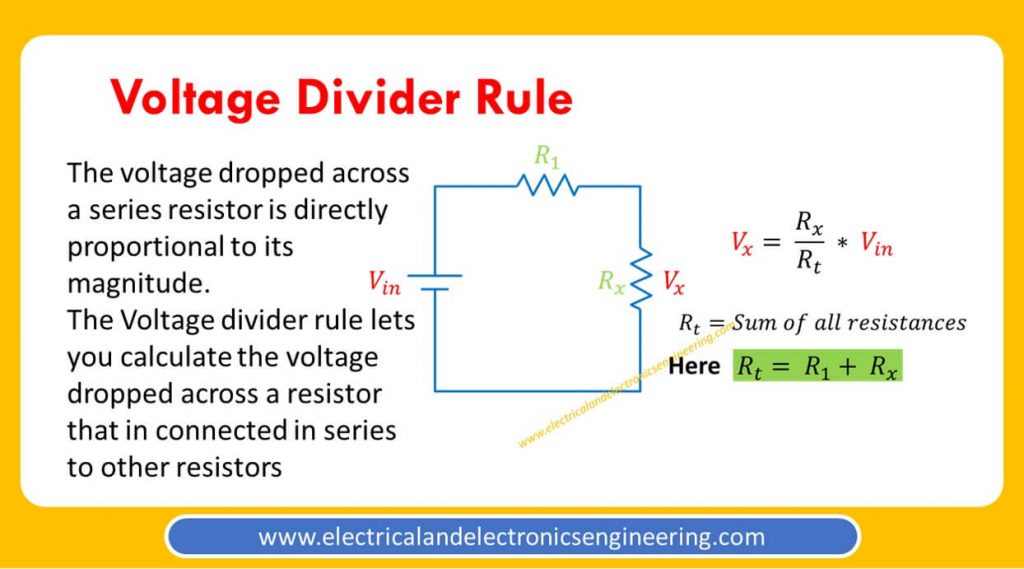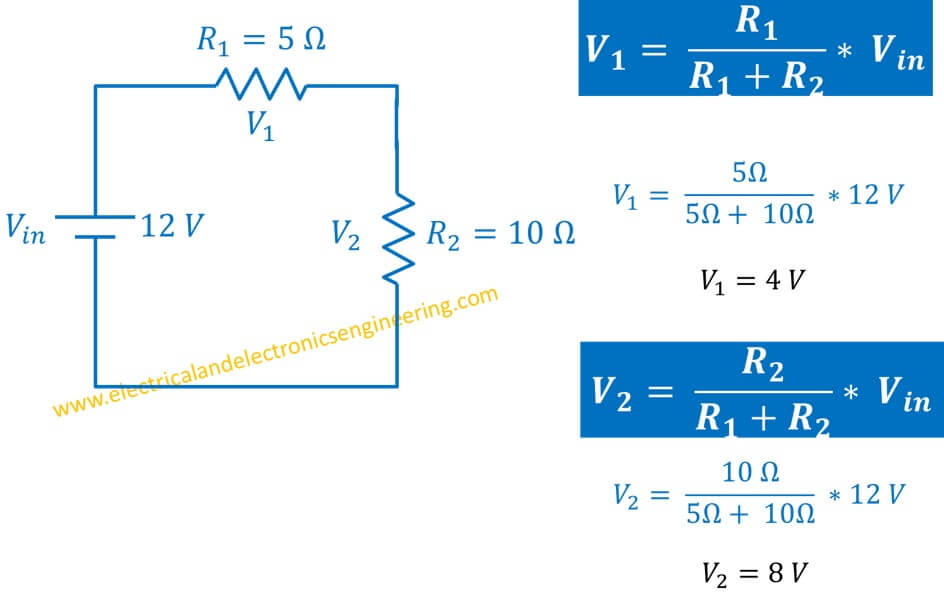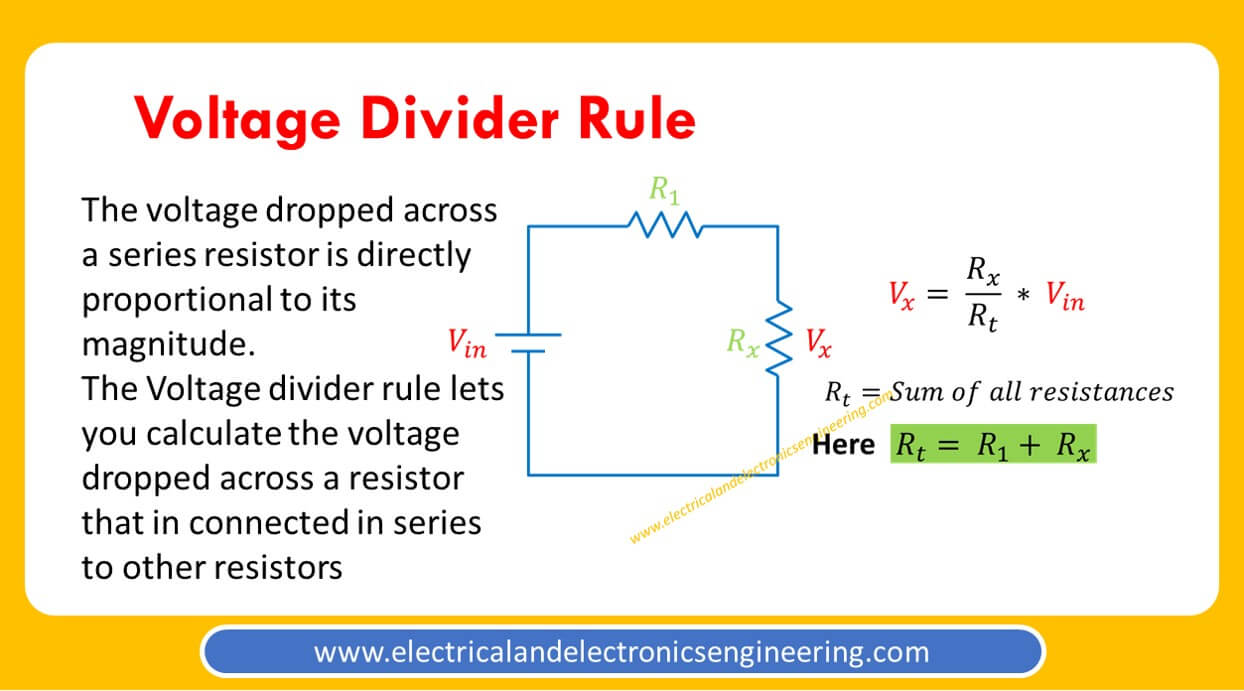The electrical voltage dropped across a series resistor is directly proportional to its resistance. The voltage divider rule or voltage divider formula lets you calculate the voltage dropped across series resistors
The formula

An example
Consider a series circuit containing 2 resistors of 5 and 10 ohms. The input voltage source is a 12 V DC battery. Now, to find the voltage across both resistors we need to apply the voltage divider formula for each.

Some Quick Reference Points
- Voltage divider rule can only be applied to series circuits since voltage always remains the same in parallel. In parallel circuits the current divides which can found using current divider principle
- The higher the resistance is the higher is the voltage drop across it
- All equal value resistors in series will dissipate equally voltage
